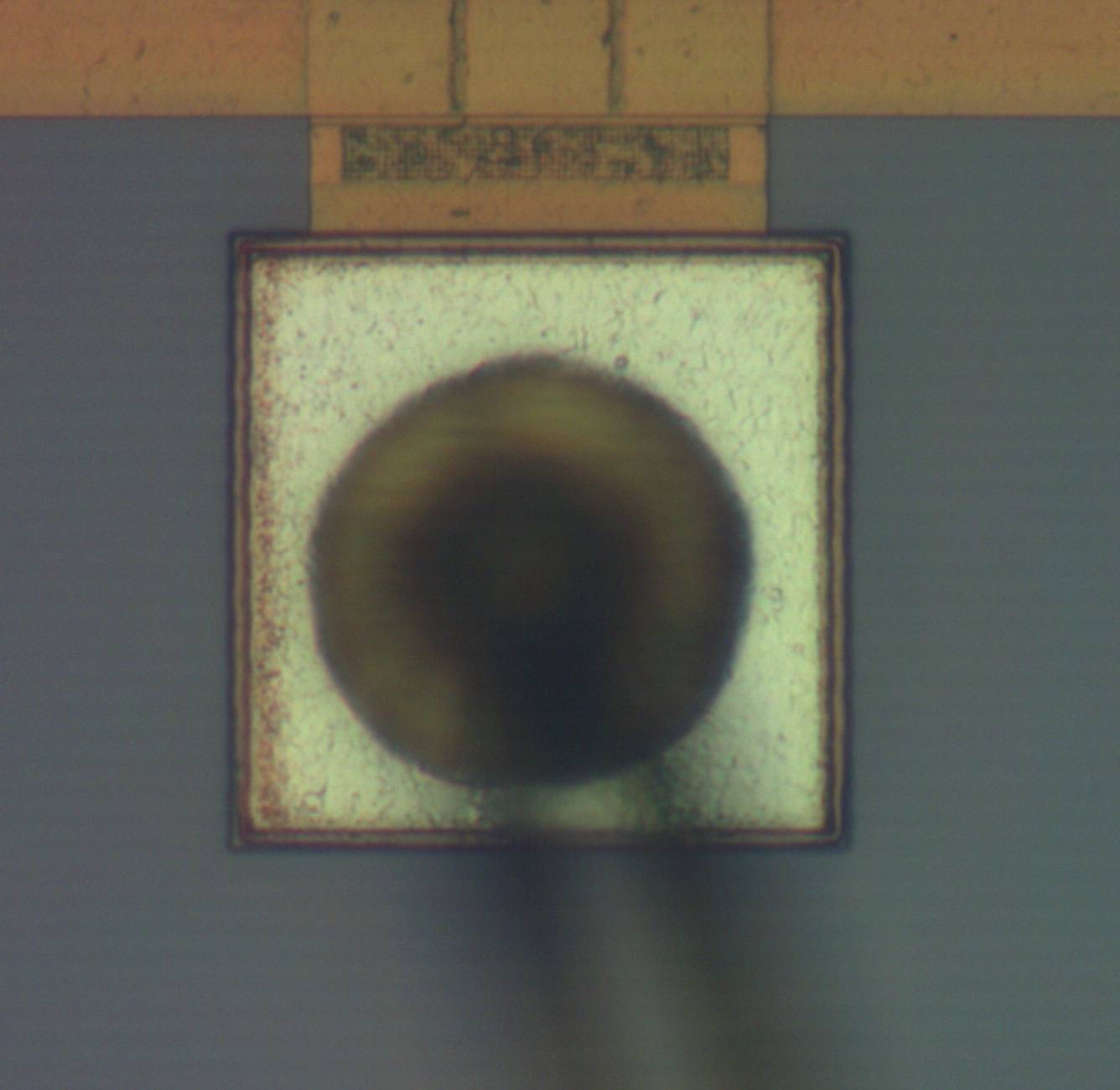bonding:ball
This is an old revision of the document!
Table of Contents
Introduction
Thermosonic ball bonding is the most common and cost effective method for general use on modern ICs.
- The wire is fed through a ceramic capillary, shaped somewhat like the end of a cheap mechanical pencil (fat cylinder with a thin cylinder on the end)
- The tip of the wire is melted by an electric arc (negative electric flame-off or NEFO, the most common process) or hydrogen flame (in older bonders, or highly ESD-sensitive applications) and surface tension forms a ball
- The capillary is lowered onto the pad and squishes the ball onto the pad. Ultrasound and heat are used to form a solid connection
- The second bond (from the wire to the leadframe) is normally very similar to a wedge bond but has a semi-circular or ring shape as it is formed by the side of the capillary
First bond
Overhead shots typically look like this (Photobit camera sensor, focal plane on pad)
or this (focal plane on ball)
Angled SEM image of ball bond (Samsung 16-mbit DRAM). Image copyright 1998-2009 Smithsonian Institution; used by permission.
Second bond
Capillary cleaning
SPT Capillary Unplugging Wires (CUW) tool
- Haven't tested
- My capillary is something like 1.6 mil ⇒ 40 um ⇒ CUW-35 reccomended
bonding/ball.1524938555.txt.gz · Last modified: 2018/04/28 18:02 by mcmaster




